Septic Tank Distribution: All You Need to Know about Distribution Boxes
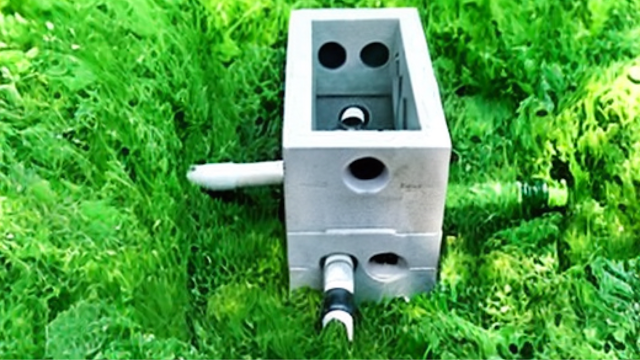 |
| a septic tank distribution box |
Septic systems are a vital component of residential and commercial properties, providing a safe and efficient way to dispose of wastewater. One essential part of the system is the distribution box. This article will delve into what a distribution box is, its role in a septic system, and everything else you need to know about it.
With a wealth of experience in the septic tank industry spanning over 40 years, my wife Jeane and I are seasoned professionals with the expertise to provide valuable insights and tips on optimizing the performance and longevity of your septic system. Our comprehensive guide covers everything from selecting the right system to avoiding common pitfalls during installation or maintenance of your septic tank. If you're ready to give your septic system the attention it deserves, check out our unique guide on Septic Tank Distribution Boxes, and let us help you take the necessary steps to keep your septic system running smoothly.
Table of Contents
1. What is a Distribution Box? 2. How does a Distribution Box work? 3. Importance of Proper Installation 4. Environmental Impact 5. Do all septic systems have a Distribution Box? 6. What does a Septic Distribution Box look like? 7. Types of Distribution Boxes a. Septic Field Distribution Box b. Sewer Distribution Box c. Diverter Box Septic d. Drain Distribution Box 8. How to Find a Septic Distribution Box 9. Maintenance Schedule 10. DIY Maintenance Tips 11. Septic Tank and Distribution Box 12. Septic Tank D-Box 13. Distribution Box for Plastic Septic Tanks 14. Water Distribution Box 15. Size of a Septic Distribution Box 16. Drainfield Distribution Box 17. Local Regulations 18. Professional Services 19. Alternative Distribution Technologies 20. Upgrading Distribution Systems 21. Emergency Troubleshooting 22. Innovations in Distribution Box Design 23. Why do Distribution Boxes Fail? 24. Signs of a Faulty Distribution Box 25. Educational Resources 26. Cost Estimates 27. Conclusion1. What is a Distribution Box?
A Distribution Box (D-Box) is a component of a septic system that collects wastewater from the septic tank and distributes it evenly to the drainfield or leach field. The distribution box is typically made of concrete or plastic and is installed below ground level between the septic tank and the drainfield.
2. How does a Distribution Box work?
The distribution box is responsible for evenly distributing wastewater from the septic tank into the drainfield. The box contains a series of perforated pipes that distribute wastewater to the surrounding drainfield. The wastewater is evenly distributed among the pipes, allowing it to seep into the soil and be absorbed by the earth naturally.
3.Importance of Proper Installation
Proper installation is crucial for ensuring that your septic tank distribution boxes function effectively. Many homeowners make common mistakes when attempting a DIY installation, which can lead to serious issues down the line.
Signs of improper installation include foul odors, slow drainage, and sewage backups in your yard or home. These problems can be costly and time-consuming to fix. By opting for professional installation, you can avoid these issues altogether.
Professional installers have the knowledge and expertise to properly position and connect the distribution boxes, ensuring optimal functionality. Moreover, they use specialized tools and equipment that may not be readily available to homeowners, resulting in a more efficient and accurate installation process.
While professional installation may come with a cost upfront, it can save you from expensive repairs caused by improper installation in the long run.
4. Environmental Impact
5. Do all septic systems have a Distribution Box?
No, not all septic systems have a distribution box. However, most conventional septic systems that use a drainfield to dispose of wastewater have a distribution box. If you have a septic system without a distribution box, the wastewater flows directly from the septic tank into the drainfield without being evenly distributed.
6. What does a Septic Distribution Box look like?
A septic distribution box is usually made of concrete or plastic and looks like a rectangular box with a removable lid. The size of the box varies depending on the size of the septic system and the number of drainage lines. It is usually buried underground between the septic tank and the drainfield.
7. Types of Distribution Boxes
a. Septic Field Distribution Box
This is the most common type of distribution box used in septic systems. The box is usually made of concrete and has several perforated pipes that distribute wastewater evenly into the drainfield.
b. Sewer Distribution Box
This type of distribution box is commonly used in municipal sewer systems. It is typically larger than a septic distribution box and can distribute wastewater to multiple sewer lines.
c. Diverter Box Septic
A diverter box is used in septic systems that have more than one drainfield. The box distributes wastewater to either of the two drainfields, allowing one to rest while the other is in use.
d. Drain Distribution Box
A drain distribution box is used in septic systems that have a gravel-free drainfield. The box distributes wastewater to a series of pipes that are installed on top of the ground.
8. How to Find a Septic Distribution Box
Finding a distribution box can be a challenging task, especially if it is buried underground. However, there are some steps you can take to locate it. Firstly, you can check the original building plans, which should indicate the location of the distribution box. If you don't have access to the building plans, you can try looking for an area in your yard that appears to be sunken or discolored. This could be a sign that the distribution box is located below the surface. You can also look for any visible signs of the distribution box, such as a raised inspection port or vent stack.
If you are still having difficulty finding the distribution box, you may need to call a professional septic service provider. They will have specialized equipment, such as ground-penetrating radar or a septic camera, to locate the distribution box quickly and efficiently.
9.Maintenance Schedule
DIY maintenance is possible if you have some basic knowledge of septic systems. Signs of a failing distribution box include foul odors, slow drainage, and sewage backups. If you notice any of these signs, it is important to address the issue promptly.
Repair options may include replacing damaged components or fixing clogs within the distribution box. In some cases, upgrading to a larger box may be necessary if your current one is unable to handle the volume of waste being generated.
Regularly maintaining your septic system's distribution boxes will help ensure its proper functioning and prevent potential issues down the line.
10. DIY Maintenance Tips
You can save money and prolong the lifespan of your system by performing regular DIY maintenance on your septic tank distribution box. Proper septic tank maintenance is crucial in preventing common issues that can arise with distribution boxes. One of the main problems homeowners face is clogging due to solids and debris accumulating in the box, which can lead to backups and sewage overflow. To prevent this, it is important to inspect and clean your distribution box regularly. Start by locating it using a map or consulting a professional. Remove the cover carefully and check for any signs of blockages or damage. Use a garden hose or pressure washer to flush out any debris and ensure proper flow. Additionally, consider installing filters or screens to catch solids before they enter the distribution box.
11. Septic Tank and Distribution Box
The septic tank and distribution box work together to ensure that wastewater is properly treated and disposed of. The septic tank collects and treats wastewater, while the distribution box distributes the treated water evenly to the drainfield. The distribution box is typically located between the septic tank and the drainfield and plays a vital role in the proper functioning of the septic system.
12. Septic Tank D-Box
A septic tank D-box is another name for a distribution box. It is called a D-box because it is usually shaped like the letter "D." The septic tank D-box is responsible for distributing the treated wastewater evenly to the drainfield. It is an essential component of a septic system and must be properly maintained to ensure the system operates efficiently.
13. Distribution Box for Plastic Septic Tanks
Distribution boxes for plastic septic tanks are typically made of high-density polyethylene (HDPE) or fiberglass reinforced plastic (FRP). These materials are durable, corrosion-resistant, and lightweight, making them an ideal choice for distribution boxes. The distribution box for a plastic septic tank functions the same as a concrete distribution box, distributing the treated wastewater evenly to the drainfield.
14. Water Distribution Box
A water distribution box is a component of a water distribution system that distributes water evenly to multiple supply lines. It is not to be confused with a septic distribution box, which distributes treated wastewater evenly to the drainfield. Water distribution boxes are typically used in municipal water systems.
15. Size of a Septic Distribution Box
The size of a septic distribution box varies depending on the size of the septic system and the number of drainage lines. Typically, distribution boxes are between 12 and 24 inches wide and 18 to 48 inches long. The depth of the distribution box depends on the frost line in the region where it is installed.
16. Drainfield Distribution Box
A drainfield distribution box is a type of distribution box that is used in septic systems that have a gravel-free drainfield. The box distributes wastewater to a series of pipes that are installed on top of the ground. Drainfield distribution boxes are typically made of plastic and have a removable lid.
17. Local Regulations
Local regulations may impose specific requirements for the inspection and maintenance of septic systems to ensure compliance with environmental standards. These regulations are put in place to protect both public health and the environment. When it comes to septic system installation, local regulations often provide guidelines that must be followed. This includes specifications on tank size, setback distances, and proper disposal of waste materials during installation. In addition to installation guidelines, local regulations also outline inspection requirements for septic systems. Regular inspections are necessary to check for any potential issues or failures in the system that could pose a risk to human health or the environment. Furthermore, obtaining permits is an essential part of the process as it ensures that all installations and inspections meet compliance standards set by local authorities.
18. Professional Services
19. Alternative Distribution Technologies
20. Upgrading Distribution Systems
- Distribution System Maintenance: Regular maintenance is essential to identify and address any issues before they escalate. This includes inspecting valves, pipes, and pumps for leaks or damage.
- Distribution System Repair: If you encounter a malfunction or breakdown in your distribution system, prompt repairs are crucial to minimize downtime and prevent further damage. Identify the root cause of the issue and take appropriate action.
- Distribution System Upgrades: As technology advances, upgrading your distribution system can enhance efficiency and reduce energy consumption. Consider installing smart meters or automated control systems for better monitoring and management.
- Capacity Assessment: Evaluate the current capacity of your distribution system and forecast future demands. This will help determine if upgrades or expansions are necessary to meet growing needs.
- Efficiency Optimization: Implementing strategies like pressure management techniques or leak detection systems can improve overall efficiency and reduce water losses in the distribution system.
21. Emergency Troubleshooting
22. Innovations in Distribution Box Design
- Improved Flow Control Mechanisms: New designs incorporate advanced flow control mechanisms that optimize the distribution of wastewater throughout the septic system.
- Enhanced Durability: Distribution boxes now feature durable materials that resist corrosion and deterioration, extending their lifespan and reducing maintenance needs.
- Eco-Friendly Materials: Manufacturers are increasingly using environmentally friendly materials in distribution box production, reducing their carbon footprint and impact on natural resources.
- Smart Technology Integration: Some distribution boxes now come equipped with smart technology features that allow for remote monitoring and control, enhancing operational efficiency.
- Modular Design Options: Innovations in modular design enable easier installation and customization of distribution boxes to suit specific site requirements.
23. Why do Distribution Boxes Fail?
Distribution boxes can fail due to a variety of reasons, including age, corrosion, root intrusion, and damage from heavy machinery. A failed distribution box can cause uneven distribution of wastewater in the drainfield, leading to a backup of sewage and potential damage to the septic system.
24. Signs of a Faulty Distribution Box
If you notice any of these signs, it is important to call a professional septic service provider to inspect your septic system. They will be able to determine if the distribution box is faulty and make any necessary repairs or replacements.
25. Educational Resources
- Septic System 101: A Beginner's Guide' - This comprehensive guide covers everything from how a septic system works to tips for proper maintenance.
- Troubleshooting Common Distribution Box Issues' - Learn about the most common problems that can occur with distribution boxes and how to fix them.
- Environmental Impact of Septic Systems' - Explore the environmental implications of septic systems and discover ways to minimize their impact.
- Video Tutorials for Septic System Maintenance' - Visual learners will find these step-by-step video tutorials helpful in understanding various aspects of septic system maintenance.
- Online Forums and Communities' - Engage with experienced homeowners, professionals, and enthusiasts in online forums where you can ask questions, seek advice, and share your own experiences.
26. Cost Estimates
27. Conclusion
In summary, a distribution box is a vital component of a septic system that ensures that treated wastewater is distributed evenly to the drainfield. There are various types of distribution boxes, including septic field distribution boxes, sewer distribution boxes, diverter box septics, and drain distribution boxes. It is important to maintain the distribution box and ensure it is functioning correctly to prevent potential damage to the septic system.
FAQs
How often should a distribution box be inspected?
It is recommended that distribution boxes are inspected every three to five years to ensure they are functioning correctly.
Can a faulty distribution box be repaired, or does it need to be replaced?
This depends on the extent of the damage. In some cases, a faulty distribution box can be repaired, while in others, it may need to be replaced.
What is the lifespan of a distribution box?
The lifespan of a distribution box varies depending on the material it is made of and how well it is maintained. Concrete distribution boxes can last up to 50 years, while plastic distribution boxes have a shorter lifespan of around 20-25 years.
Can a distribution box be installed above ground?
No, distribution boxes must be installed underground between the septic tank and the drainfield.
What happens if a distribution box fails?
A failed distribution box can cause sewage backups and potential damage to the septic system. It is essential to call a professional septic service provider to inspect and repair the distribution box as soon as possible.
.png)

.png)

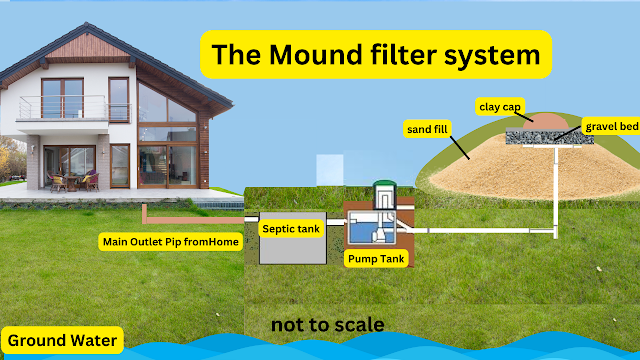
.png)

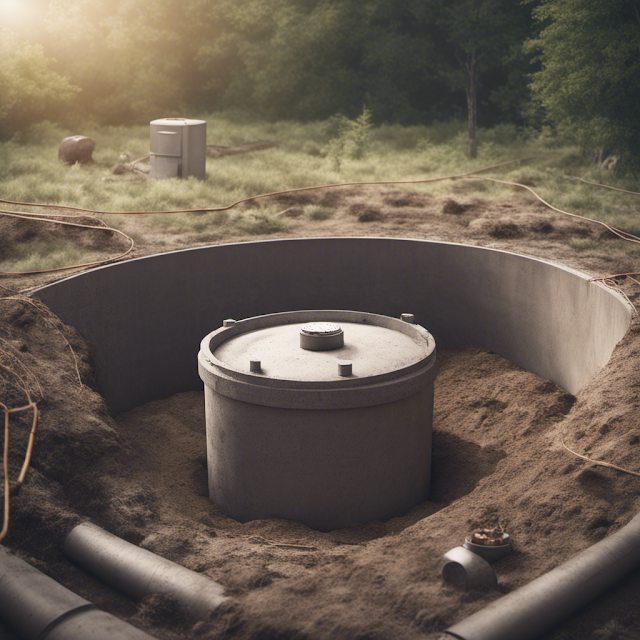
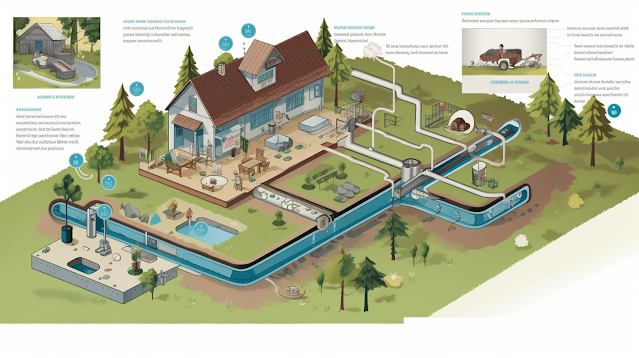
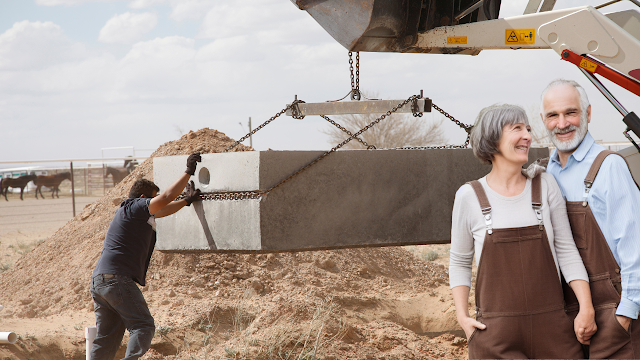


Comments
Post a Comment